Sizing a ductless minisplit for heating
Hi all,
I’m going to install a ductless heat pump. I settled on LG Art Cool Premier (HYV1 or HYV2). Now I need to figure out system size, and there is too much info.
I have 550 sf addition built in late ’80s, which is a split lever open space, and is VERY cold (i’ve attached some photos)!
It has a large french door (8×10′ glass, 3 sections), 7 windows, and 5 skylights. All are double glass.
The whole addition sits over VENTED crawl space/foundation (it has 2 vent openings in the concrete!!!). Second level sits over a garage, and a lot of cold air comes from there (will improve insulation).
Insulation is questionable, but it’s always cold there. Drafts from unknown sources (either roof venting, or garage or foundation or poor insulation or too many windows.
The main house heating system is ducted force hot air (gas), very old, and wasn’t designed with addition in mind. Addition feeds off the main floor and basement duct. So needless to say, there’s not enough hot air coming in. However, it still helps.
Ok, so I calculated on ecomfort the heating capacity to be 17000 btu/h
The 12K LG (LA120HYV1) has 13,720 btu/h at 5F (4.68 COP)
The 18K LG (LA180HYV1) has 19,300 btu/h at 5F (3.81 COP)
THe 15K newer LA150HYV2 has 18,490 btu/h at 5F (3.81 COP)
This article on GBA ( https://www.greenbuildingadvisor.com/articles/dept/musings/ductless-minisplits-may-not-be-efficient-we-thought ) says I should not oversize…
PLEASE PLEASE help me with your thoughts and advise.
PS – I know I MUST improved insulation … it just takes time 🙁
I also have a vented attic space adjacent to 2nd level, with outside temp air, separated from living space by an interior door … I’m thinking about closing the vents in the winter. (i’m a roofer, and can figure this one out).
GBA Detail Library
A collection of one thousand construction details organized by climate and house part


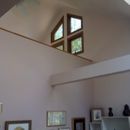
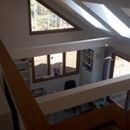
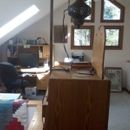
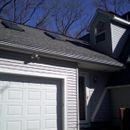
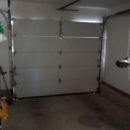







Replies
Where are you located?
Steve ... right, i had to mention this in OP ... but when I realized, was too late... can't edit.
I'm in Boston, MA ... average winter temp here is 18-20F ... but can get to 0F or even below.
LEVAB,
I wonder if it would make more sense to tackle your building envelope before adding the split mini system. Going from a vented to an unvented crawlspace and air sealing everything you can access would improve performance without simply trying to brute force your way to a more comfortable living space. Here are a couple of articles on these topics:
https://www.greenbuildingadvisor.com/blogs/dept/musings/getting-biggest-bang-your-air-sealing-buck
https://www.greenbuildingadvisor.com/blogs/dept/musings/building-unvented-crawl-space
Steve, even with insulation work, it's just too damn cold there, and I want to use (already using) this space as bedroom.
Like I said, it's duct is connected to the main flood duct, which also heats the basement. so one duct feeds 1500. sq. ft. ... and 2nd floor of main house is only 500 s.f. which has it's own duct, and is way too hot.
So to get this addition even moderately warm(69F), i need to set thermostat to 78F !!!
Bottom line - I need a better source of heat. It's not brute force .... sealing everything is of course necessary, but there is just not enough heat there
So my question - which Heat Pump to get?
Also, I already blocked crawl space vents ... didn't help much ... duct that goes into addition, runs through crawl space, and there is huge heat loss in there, which is something I cannot change - no access to crawl space at all
The 99% outside design temp for Boston is +12F (and yes, it sometimes gets into negative single-digits in town).
The ecocomfort online load tool isn't nearly good enough for accuracy on that kind of room. I just did a quick & dirty load calc on my family room with the tall cathedralized ceilings and it overshot the numbers a REAL Man-J on that room by 51%(!), which is just plain ridiculous. But since the ecocomfort load tool doesn't report the underlying assumptions it's a bit hard to tell where the error is being introduced, so there's no way to correct for it...
...other than to have a competent and qualified professional (not an HVAC installer) perform the load calculations. You can probably get a room-by-room load calculation for the whole house for ~$500, if you shop around. A P.E. might do just the room(s) in question for a couple hundred.
Or, you can run an I=B=R type load calculation, and fudge the air infiltration numbers for the "after air sealing" picture. In order to figure out the U-factors to use...
Do any of those double-panes or skylights have low-E glass? (Even in the late '80s skylights tended to be low-E).
Is it 2x4/R13, or 2x6/R19 type construction? (Could be either at that vintage.)
Are the rafters 2x8, 2x10, or 2x12? (from the pictures of the skylights I'm guessing 2x12...)
See: https://www.greenbuildingadvisor.com/blogs/dept/musings/how-perform-heat-loss-calculation-part-1
and
https://www.greenbuildingadvisor.com/blogs/dept/musings/how-perform-heat-loss-calculation-part-2
Using crummy rules of thumb a typical 550' addition exposed on 3 sides with no foundation or floor insulation could come in at about 10,000-12,000 BTU/hr @ +12F if it's all clear glass, and 2x4 construction and a bit air leaky. If it's low-E reasonably tight, and 2x6 expect it to be under 10,000 BTU/hr.
Either way, it's really FAR more likely to be a choice between the LA120HYV1 vs the 3/4 tonner (LA090HYV1), but do the I=B=R math to prove it to yourself.
I suspect the numbers will show that the LA090HYV1 can cover the entire load by itself, (or at least very close to it.) But since the fossil-burner is still capable of providing a good fraction of the heat, it's really down to just the LA090HYV1, if going with the Art-Cool Premier series. The 3/4 tonner will be more appropriately sized for the cooling load too.
Dana,
Thanks for detailed answer.
So the walls are 2x4/r13 ... i'm actually not sure how well it's insulated, judging by crappy build of that addition.
Rafters are most likely 2x12 ... i'd check now, but kids sleeping ... but yea, those skylight wells are very deep.
Low-e? not sure ... let's assume it's not. Besides from my understanding of low-e - it has to do with UV blocking ... and that room does not get too much sun... only in afternoon, from 2 skylights on 2nd floor. No sun from windows.
So i originally was choosing between 12K and 18K BTU ... now you tell me I can do it with 9K? wow ...
So i'm still leaning toward 12K at least ... here is why:
My gas heat may die at any moment, due to age (almost 30 y.o.)
I was also thinking about blocking the duct to the addition, once the Heat Pump goes in. If it's too cold, I can always open duct in the basement. But, it's so cold in the crawl space, and uninsulated duct running through it ... just so much heat loss...
Dana - do you have a heat pump? Do you use it for heat?
I have a neighbor with LG "Inverter V" 36K 3 zone system.
I asked him to turn 1 zone to MAX HEAT ... after 10-15 minutes, the air coming out wasn't even that hot ... is that normal? When I run space heaters, the air coming out is MUCH HOTTER ...
Does MITSUBISHI (MZ-FHxxNAH) produce hotter air than LG? I want to get LG, because H2i (High Heat) Mitsubishi models are $1000 more for same BTU, and I need to buy Base Pan Heater ($377 extra), and install it .. ... LG comes with Base Pan heater, and LGRED is rated fro same low temp operation (-13F) as Mitsu H2I
Basically you would say that 18K is way too much for me?
What are the negative OVERSIZING effects of installing 18K if you say I only need 9K (except initial cost difference)?
Thanks very much for helping.
Levab,
Q. "From my understanding of low-e - it has to do with UV blocking ... and that room does not get too much sun... only in afternoon."
A. The purpose of a low-e coating is to raise the R-value of the glazing. A low-e coating lowers the U-factor (in other words, raises the R-value) of the glazing. This saves energy, especially at night and on cloudy days, whether or not the glazing gets any sun.
A side effect of some types of low-e coatings is that the coatings lower the solar heat gain coefficient (SHGC) of the glazing. This can be an advantage in hot climates, especially if the window is exposed to the sun, but isn't always desirable in cold climates. That said, in almost all circumstances, a low-e coating lowers energy bills on an annual basis. (Note that there are some types of low-e coatings which can result in a window with a relatively high SHGC. The only way to know whether a low-e window has a high SHGC or a low SHGC is to read the NFRC label.)
@ Martin, thanks for explaining the Low-e. However I don't know if my windows or skylights have it. And whether they do or don't - I still need to choose a Ductless Heat Pump - any advice on that?
Levab,
Dana has given you good advice.
The first step is always to perform a load calculation. For more information on load calculations, see these articles:
How to Perform a Heat-Loss Calculation — Part 1
How to Perform a Heat-Loss Calculation — Part 2
Calculating Cooling Loads
Who Can Perform My Load Calculations?
You may also want to read this article:
How To Buy a Ductless Minisplit
Finally, I'd like to reinforce Steve Knapp's advice: To the extent that you are able, focus on air sealing measures and insulation improvements before you buy any new HVAC equipment.
For the crude IBR heat load estimate, use U0.10 for the 2x4/R13 walls w/vinyls siding- it'll be close enough.
For a 2x12 cathedralized ceiling with crummy lo-density R38 batts, U0.030 (if upon measuring they turn out to be 2x10 /R=30, use U0.035 )
For wood sashed clear glass double pane skylights & windows, assume U0.50.
If metal sashed (with metal showing on the interior for the full circumference, not just the insulated glass unit) assume U0.60.
Assume solid 2" exterior doors to be U0.50.
"What are the negative OVERSIZING effects of installing 18K if you say I only need 9K (except initial cost difference)?"
Except for the lower comfort & lower efficiency, you mean? ;-)
Oversizing a mini-split by too much takes a toll on comfort when the cfm numbers are high enough to produce a wind chill effect, and it's louder.
Oversizing a mini-split takes a toll on both comfort AND efficiency if the minimum modulated BTU/hr output @ 47F is high enough that it indicates it will be cycling on/off most of the heating season rather than modulating it's speed up/down with load. The turn down ratios of LGs are pretty good, but it's not infinite:
The minimum modulated output @ +47F of both the LA180HYV1 & LA150HYV2 is over 3000 BTU/hr, and probably more than your load @ +47F (especially if the gas burner is contributing even a small amount of the heat.)
The minimum modulated output of the LA120HYV1 & LA090HYV1 are both a bit over 1000 BTU/hr @ +47F, and probably LESS than your heat load @ +47F, which means they will be modulating even during the milder weather.
https://www.ecomfort.com/manuals/ArtCoolPremierEngineering.pdf (see P11 for the short-form heating specs @ +47F.)
https://cdn-tp2.mozu.com/11590-15709/cms/files/LA180HYV1_Submittal.pdf
https://s3.amazonaws.com/s3.supplyhouse.com/product_files/LG-LA150HYV2-Submittal.pdf
So if you're going to skip any sort of load calculation and just punt, acknowleding that installing a unit bigger than the 3/4 tonner is almost certainly going to be oversized, the LA120HYV1 is the absolute biggest one you should be considering. The others are pretty much guaranteed to do more cycling than modulating, and will be louder & more expensive,
Dana,
Thanks for great answer. Honestly I'm not very much concerned with +47F cycling / modulating. I'm more concerned with temperatures below freezing ... like +30F - 0F, and sometimes below, when the heat pump will work at full capacity. Let's say +5F because many mini-split manufacturers use that.
5F is when max BTU output drops, and when I really need those BTUs ...
BTW... ceiling rafters are not 2x12 ... i measured them, and they are 2x10 (9" wide) ... but I still think it's 38R insulation.
So another question ... Should I get LG Red ( LA120HYV1 ) or Mitsubishi H2i (MZ-FH12NAH)?
They are very similar in specs, but LG is $1,328 (w/ Base Pan Heater Installed) and Mitsubishi is $2,073 (w/ Base Pan Heater Installed) ... so $750 is a big difference - is it WORTH it? Is there a real difference in quality / longevity between LG and Mitsu? I'm generally a fan of LG products ...
BTW - Mitsu 12K is 3700 BTU/hr @ +47F - so its a lot more cycling.
Thank you for your input!
So now i'm torn between LG, Mitsubishi and Fujitsu "high heat" 12K BTU models
From what I read on hvac forums - LG have support / parts issues, if something goes wrong...
But LG is $700 less expensive...
So what should I get??? Any LG mini-split owners - please chime in ...
"Honestly I'm not very much concerned with +47F cycling / modulating. I'm more concerned with temperatures below freezing ... like +30F - 0F, and sometimes below, when the heat pump will work at full capacity. "
That's completely wrong-headed thinking. If you at least make a serious attempt at calculating the heat load the anxieties about insufficient BTUs should abate. If it's so air-leaky that the true load @ +5F is over 10,000 BTU/hr those air leaks should be dead-easy to find and fix.
If those are 2x10 rafters it won't be R38 unless it's an unvented ceiling with R38HD batts tight to the roof deck (which would be a code violation. It's more likely to be R30HD batts, which leave an inch of vent space. R30HDs would yield a U-factor of about U0.035.
As mentioned previously, even the 3/4 tonner has more than enough capacity for the likely load at +12F on it's own. Until & unless you're ripping out the ducts and capping them off the fossil burner is also going to be covering a large slice of the heat load too.
Even at -5F temps during a Polar Vortex chill I sincerely doubt that even the 3/4 tonner would be running at full capacity. The fossil burner can probably still keep it above freezing in there even without the mini-split, and when they're sharing the load the mini-split won't be running as hard as it would if carrying the entire load. Specifying a heat pump solution for the 50 hours per decade when it's actually below 0F is all but guaranteed to be sub-optimal.
If Mitsubishi, take a look at the FH09, and FH06, both of which modulate down to ~1600 BTU/hr @ +47F.
The FH06 is good for 8700 BTU/hr @ +5F:
http://meus1.mylinkdrive.com/files/MSZ-FH06NA_MUZ-FH06NA_ProductDataSheet.pdf
The FH09 (~$100 more) is good for 10,900 BTU/hr @ +5F:
http://meus1.mylinkdrive.com/files/MSZ-FH09NA_MUZ-FH09NA_Submittal.pdf
With reasonable tightening up & spot insulation I would expect the +5F heat load of that 550' space to be within the FH09's capacity. But run some semi-real numbers already not the crummy eComfort tool) - this is getting to be a bit silly! If nothing else, give this one a shot: http://loadcalc.net/
LG's reliability record as of a few years ago was a bit spotty, but it really boils down to how well they support the product in your area. I have zero direct experience with LG mini-splits and have to go on industry scuttlebutt. Mitsubishi has quite a substantial support infrastructure in MA (including their regional training center in Southborough, MA), and lot's of certified installers, making them a reasonably safe bet.
The Fujitsu 9RLS3H would deliver a bit more heat than the FH09, but has a higher minimum modulation, but is still likely to be reasonably matched to your load.
Dana,
My first attempt at using loadcalc.net ... I got 26000-30000 BTU load for heating :D
Maybe I messed up somewhere ... and the calculator is pretty complicated ... will try again
Here is screenshot
On 2nd attempt (I chose fewer items on step 1) i still get 18k - 21K btu heat load (depending on options)!
So am I doing something wrong OR this calculator is completely off OR your 9K heat pump estimate is way undersized
I will try manual calculation based on your links ... thanks for help!!
Where to even begin... To have any shot at accuracy it has to have the most aggressive assumptions possible.
Your loadcalc screen shot is showing 700' of exterior ceiling for a 550' space- is that really true?
It's also showing 600 feet of floor area for a 550' room which is at bit odd. The loft space is above fully conditioned space, not a crawlspace, and has zero floor losses.
The 4800 BTU/hr for basement walls + 3304 BTU/hr for floor losses (over 8K total!) aren't too likely if it's a SEALED crawlspace, (even if uninsulated.) Knock that back to about 1500 BTU/hr. The 8K can't be true unless you have LOTS of vent area to the crawl space on multiple sides of the space that are left open.
If your calculating the load for a mini-split, the leaky low-R ducts in the crawl space need to be turned into super-tight highest-possible R, and located in conditioned space. Or, just subtract the 4531 BTU/hr of duct load completely off the final number.
The 3914 BTU/hr of infiltration loss is also suspiciously high. Set the construction to "good" or "very tight", since "average" can (and should) be corrected to at least "good" air tightness. It looks like most of the windows aren't operable, which is usually means they're very tight compared to "average" sloppy double-hungs with leaky weatherstripping. If it isn't "very tight: right now, a room like that can be made so without a lot of effort. That will knock about 3000 BTU/hr off the final number.
Did you subtract the window & door areas from the gross wall area, or did you use the gross area?
Taunton's 99% outside design temp is 3F cooler than Boston's, but the screen capture didn't catch the inside & outside design temps (in the upper right corner of the loadcalc screen). That adds about 5% to the calculated load. Use a code-min 68F for the inside design temperature, even if you normally keep it warmer than that.
One deficiency of that tool is that it doesn't discount body heat from the heat load, only adds them to the heat load. Subtract 230 BTU/hr per sleeping human.
Using loadcalc on my lossy family room addition with the high cathedralized ceiling still comes in nearly 2x what an IBR calculation delivered for a heat load (prior to infiltration & ventilation loss estimates), and well over what an aggressive Manual-J delivered, so perhaps it's not the best tool to use here either. But you have to at least take the garbage out of the equation (garbage in= garbage out), and there is lots of it still evident in the screen shot.
It's hard to tell just eyeballing it in your pictures but if you really have 200 square feet of U0.50 window for 550' of conditioned floor space (a 36% window/floor ratio, more than twice the national average) the windows are likely to be at least half the heat load.
Dana,
First, I really appreciate your help. I am a licensed contractor myself - i'm a roofer specializing in "greener" roof tech such as metal for steep slope and PVC for flat ... i know green crowd hates PVC, but I can debate that it's the greenest flat roof option ... in any case ...
I will work on all weather tightening, but ... the walls are at best 13R, but I suspect many voids in insulation. Ceiling insulation as you said is at most 30r ... windows and porch door and skylights make up at least 200 s.f. ... probably a bit more.. Yes windows are better than crappy double hungs, but still they are older, and not as good, as triple glaze 0.22 U-factor that I will be putting in in place of single glass in the older part of the house.
The biggest problems that I can't fix without much work and expenses:
I can't improve wall insulation until i do siding - at that time I will add 2" roof PolyISO insulation on walls (12R).
I can't improve ceiling insulation until replace the roof (will add 12-18R on top).
LOFT space is above VERY COLD and drafty garage. I will be closing in the garage door, since I don't put my car there anyway. Will do 2x6 wall with 5.5" of Poly ISO (33R) ... but rest of garage will still be "colder". A lot of heat loss from garage.
The roof connection between addition and old house has vented attic space. There is air passage from soffit vents into that attic, and a gable vent for circulation ... basically that space is almost as cold as outside, and makes loft colder.
Also under loft skylights there isa finished "closet" space that is very cold, and needs complete redoing.
Finally the crawl space - massive cold comes from floors, and there are many air leaks all over the place.
I did block of crawl space vents, but it did not help much.
Bottom line - the addition is very poorly built ... many air gaps that are hard to identify, door jambs coming off or misaligned ... even the french patio door is off by 1/2 from top to bottom (i used level to see if it's straight) ...
Many of these air leaks will take time and money to address. I will close off soffit vents and gable vent, when i install a metal roof. That should help with drafts in the upper part. But it will be some time till I get to it.
I read in one of the articles here, mention from you that 9K Fuji heat-pump has 14K heating BTU VS Mitsu 10.2K ... So I think that's the one I will go with. Once all it done, that should be plenty to keep this space warm, even if I cut off the ducts.
I will redo my heat loss calculation, but bottom line - I need serious work on making space more insulated. And finally - there is not much I can do about crawl space ...I will make some better pictures to show all of what I explained.
Thank you again Dana. You were very helpful!
Per the loadcalc screen your wall losses are only 2257 BTU/hr (credible), the window losses 5700 BTU/hr (also credible), and the ceiling losses 1190 (also credible.) .
All together that's just a bit over 9000 BTU/hr.
Doing anything to the walls or ceiling aren't going to change the final number by a whole lot, and would be expensive, but worth it when re-roofing or re-siding. The 2" of roofing polyiso to the wall pulls only about 1200 BTU/hr off the total load number- worth doing (for a lot of reasons), but it's barely more than the frost on the tip of the iceberg of your load calculations, less than 10% of of your ~16K-ish best-case loadcalc.
The window losses are biggest line item but expensive to fix. You might look into low-E storm windows (they make them for fixed windows as well as operable windows) which jn most cases won't nrap enough heat to break the seals of clear glass insulated glass units, but would cut the 5700 BTU/hr window losses down to ~ 3000 BTU/hr or even less, peeling more than 2500 BTU/hr off the load, but also reducing the convection draft comfort problem by raising the temperature of the interior side glass. Putting low-E storms over low-E windows is a bit riskier, but even that isn't a guaranteed fail. But even low-E storm,s pretty expensive compared to the lowest hanging fruit:
The easier to fix parts are the 4800 BTU/hr of duct losses (which doesn't really exist, if heating with mini-splits) and 3914 BTU/hr of the air infiltration losses, and the 3328 BTU/hr of floor losses. If sealing the vents barely moved the needle, I suspect you have massive air leakage at the foundation sill and band joist. If you (or someone you know) is skinny enough to get in there, you can get a lot done in just a couple hours with a case of polyurethane caulk and a powered caulking gun.
The floor losses to the loft area can probably be fixed in an afternoon with a rental blower and $50 in material, and "worth it" from a comfort point of view if that's a sleeping loft. If there's enough room to work in the crawl space, once the band joists are sealed installing batts under the floor would make a large difference, even with sub-code contractor rolls of R13s (about a grand in material.)
Fixing weatherstripping on doors & operable windows can be a PITA, but the material costs are low.
A 3/4 ton or 1 ton Fujitsu (both will modulate down to 3100 BTU/hr @ 47F) wouldn't be insane oversizing. The 9RLS3H is good for 12,000 BTU/hr @ +17F, the 12RLS3H is good for 16,000 BTU/hr, and if you REALLY think you're going to cap off the ducts before fixing the heat leaks, the 1-ton might be the better choice.
https://portal.fujitsugeneral.com/files/catalog/files/9RLS3H6.pdf
http://www.fujitsugeneral.com/us/resources/pdf/support/downloads/submittal-sheets/12RLS3H.pdf
Installing 5.5" of polyiso in a 2x6 studwall is a waste of foam and a waste of time. Installing R23 rock wool is quicker, and about as good. If you then add an inch of continuous polyiso behind the wallboard it'll be WAY better than a cavity full of polyiso, and will have sufficient dew point control for a Boston location, if not the cold edge of zone 5, especially if it's the wall to garage rather than the true exterior.
Looking at your screen capture again, with all of that clear-glass high SHGC glass you are looking at a cooling load of 12,615 BTU/hr at Taunton's 1% outside design temp of 86F (within a degree of Boston's 87F).
That also points you toward going with a 12RLS3H rather than the 3/4 tonner, even if the 3/4 tonner covers the more likely heating load.
The max-cooling of the 12RLS3H is 13,600 BTU/hr @ 95F outside / 80F inside, so it will be able to keep it under 80F indoors even as it edges into the 90s outside, and under 75F (if you like it that cold) at your 1% outside design temp. The 9RLS wouldn't quite keep up during the absolute cooling peaks, but the 12RLS will.
Having a portable electrical space heater might ease worries about extreme events. You can use an electrical plug-in space heater if heating equipment fails, you experience an extended very cold spell, or somehow the room becomes very cold by kids breaking or leaving a window open. Planning for average winter events would help overall system performance and comfort.